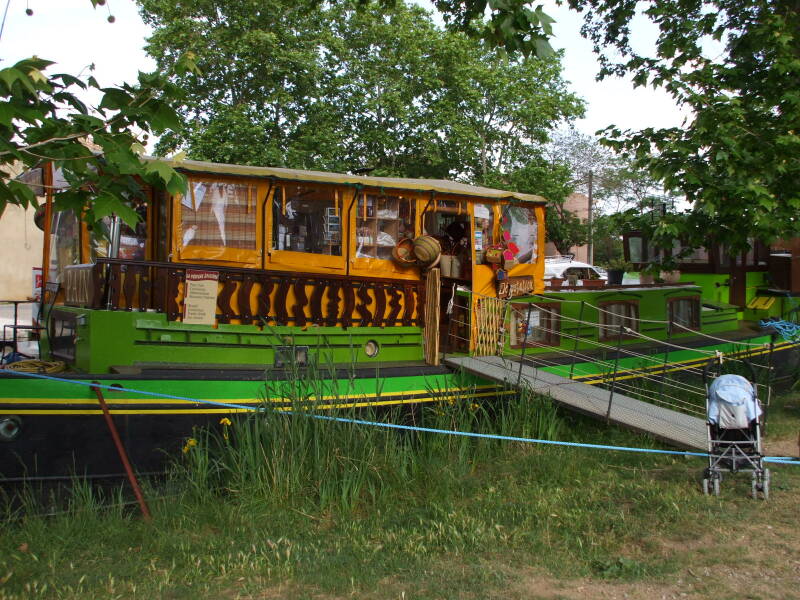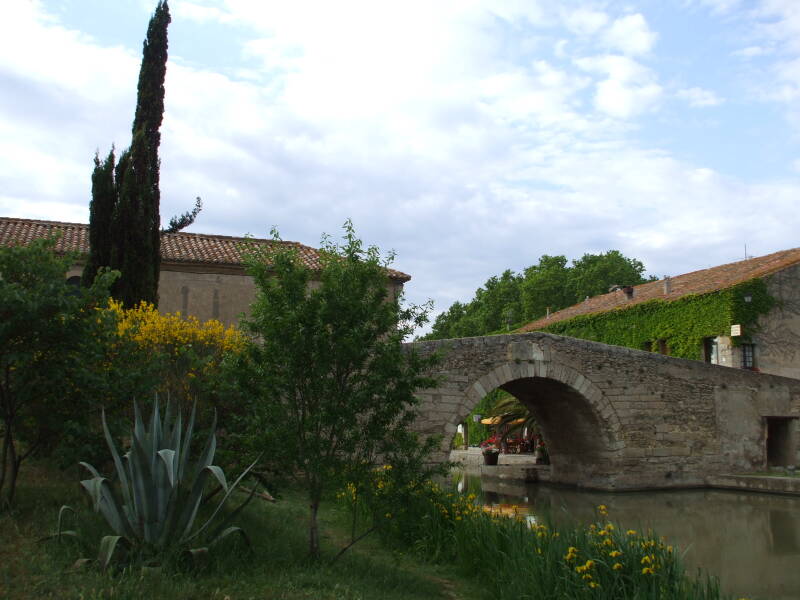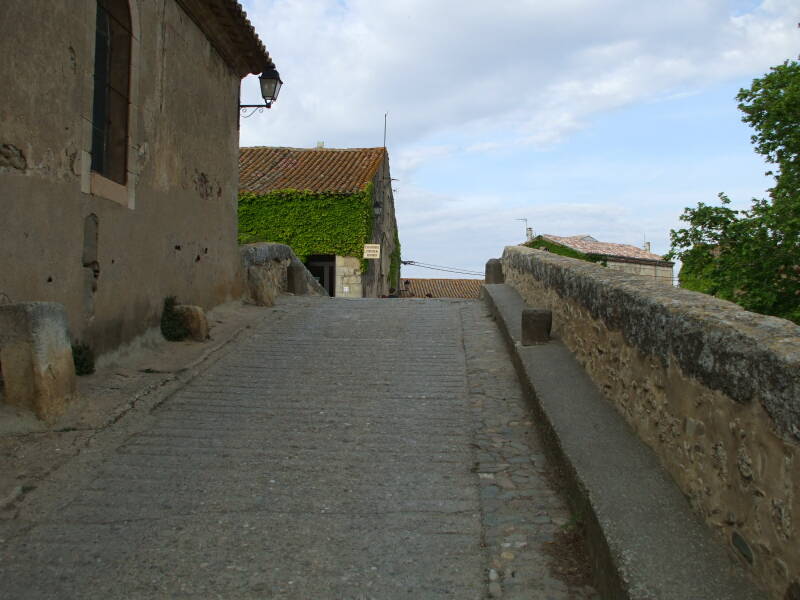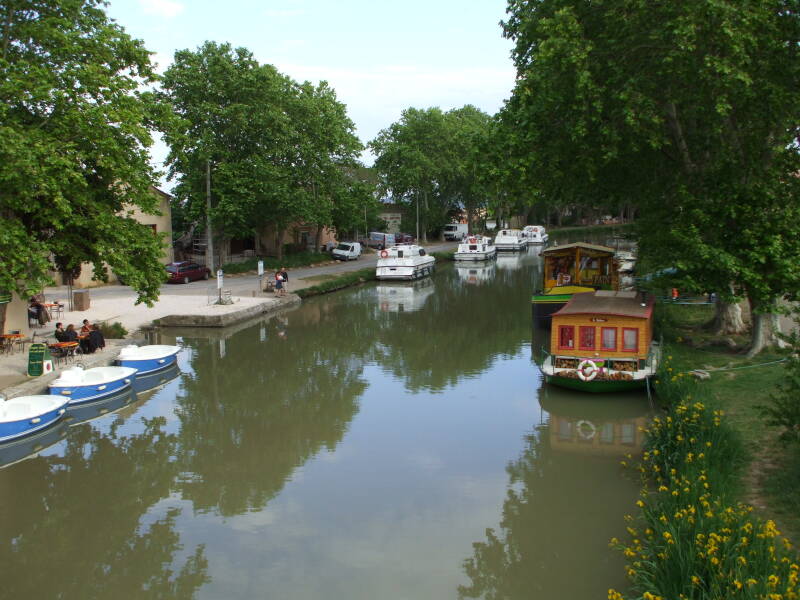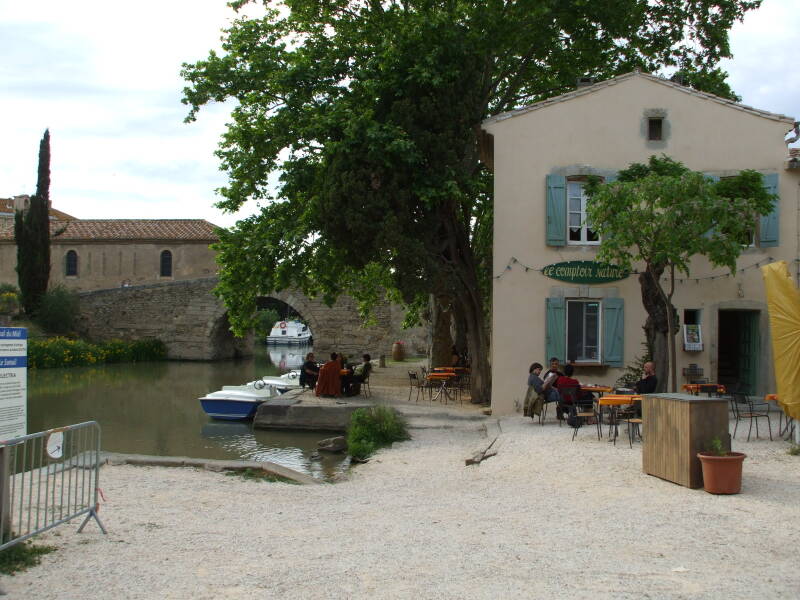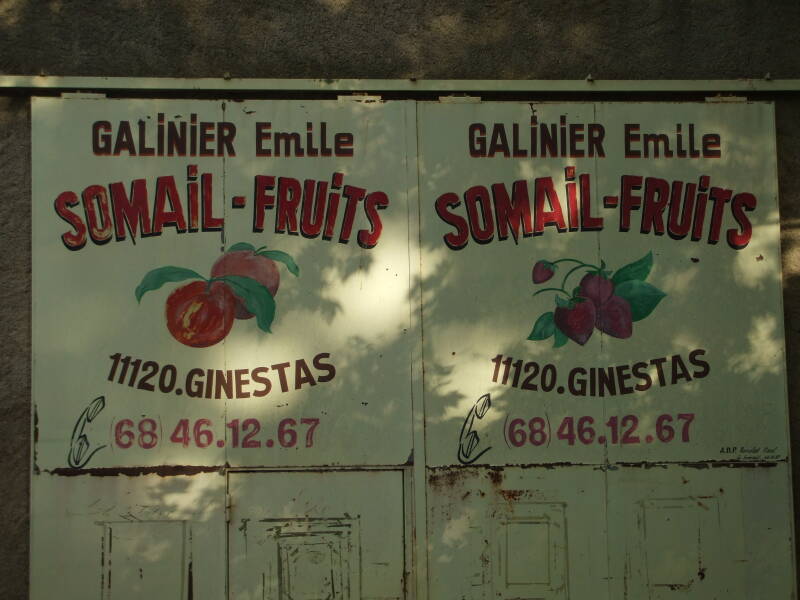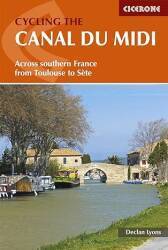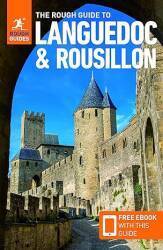
Canal du Midi
Colombiers to Le Somail
| 34.5 | kilometers |
| 0 | locks |
| 0 | elevation gain |
Colombiers
Having suddenly gained 13.6 meters of elevation
while ascending the Fonserannes lock staircase the day before,
we were in the longest level section of the Canal du Midi.
We would pass through no locks today.
After breakfast at Colombiers
we would continue to the west, stopping in the morning
at Poilhes.
Later, we would explore Capestang
and have lunch there.
We would end the day at Le Somail
after covering 34.5 kilometers,
our longest single-day distance on the canal.
A bakery near the marina provided a wide range of choices for our breakfast. The classic, of course, is croissant and café.
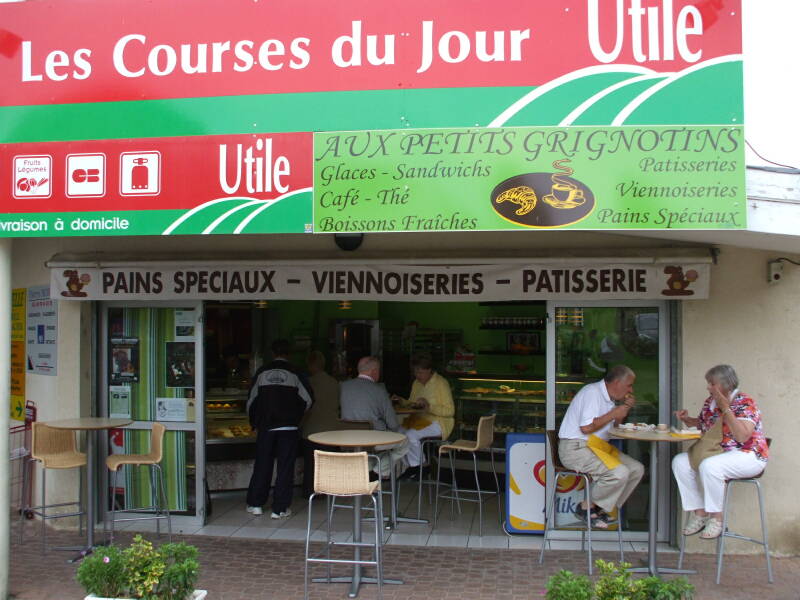
The local people came to pick up freshly baked bread. One never keeps bread in France. You get fresh bread in the morning. And then before dinner you pick up baguettes fresh from the oven.
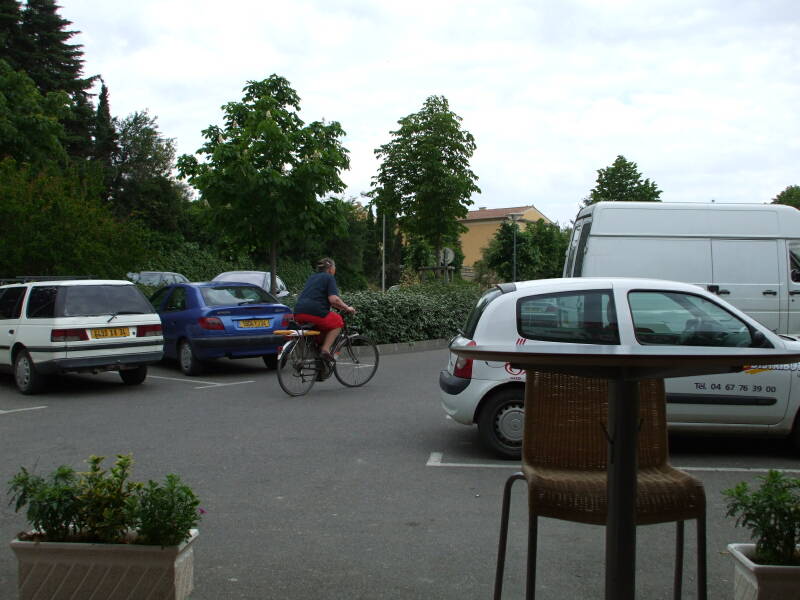
We picked up bread and fruit. The small melons are especially nice.
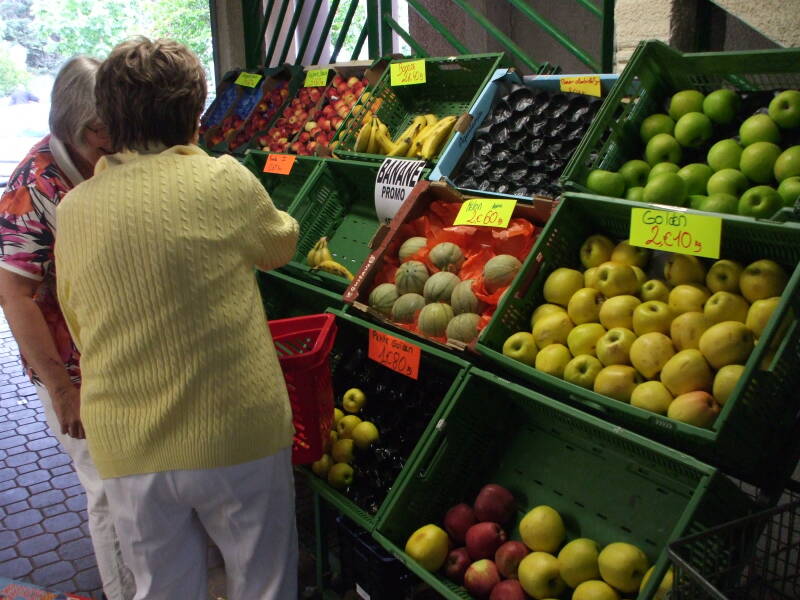
We were soon on our way.
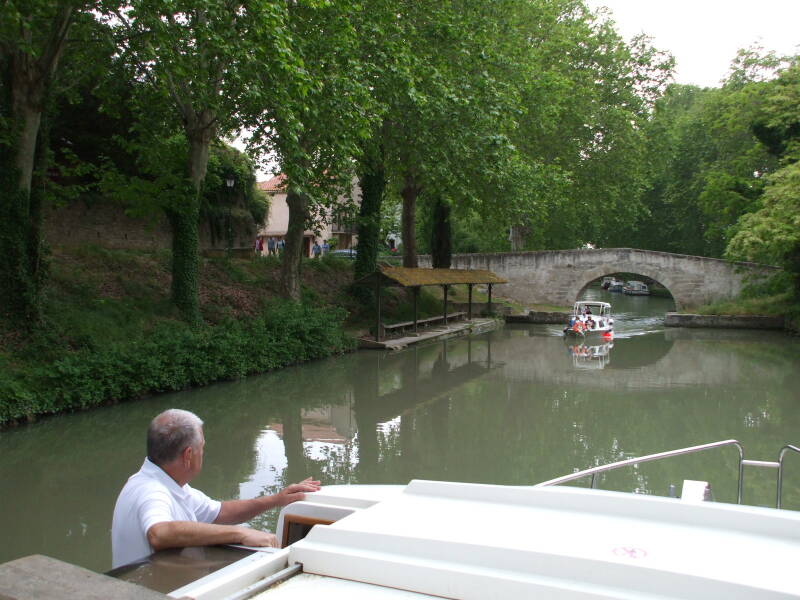
Malpas Tunnel
The course of the canal needed to pass through the hill known as d'Ensérune. However, excavation quickly ran into a crumbling layer of sandstone, subject to landslides. Any conventional canal cut through here would quickly be refilled by stone breaking free and slipping down the slope.
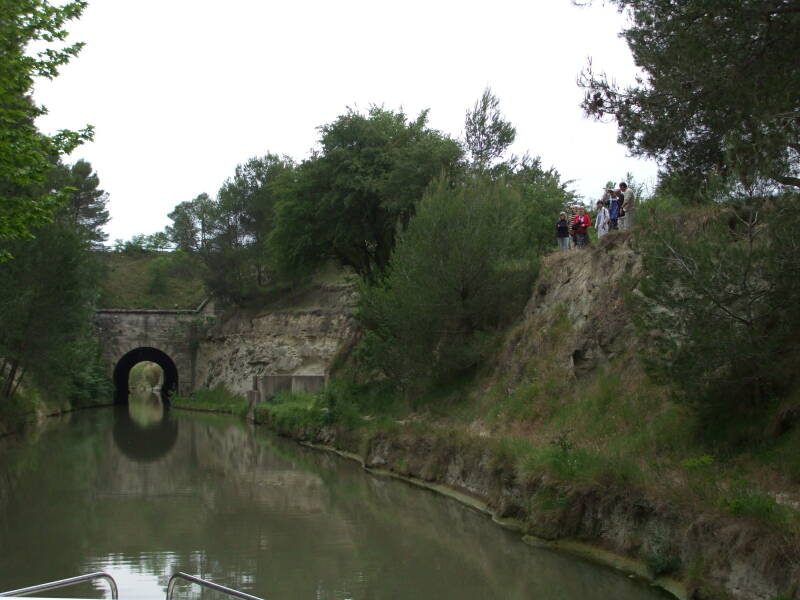
Riquet directed his workers to cut a tunnel through the hill, then apply concrete lining. They dug a test tunnel in just eight days in 1679.
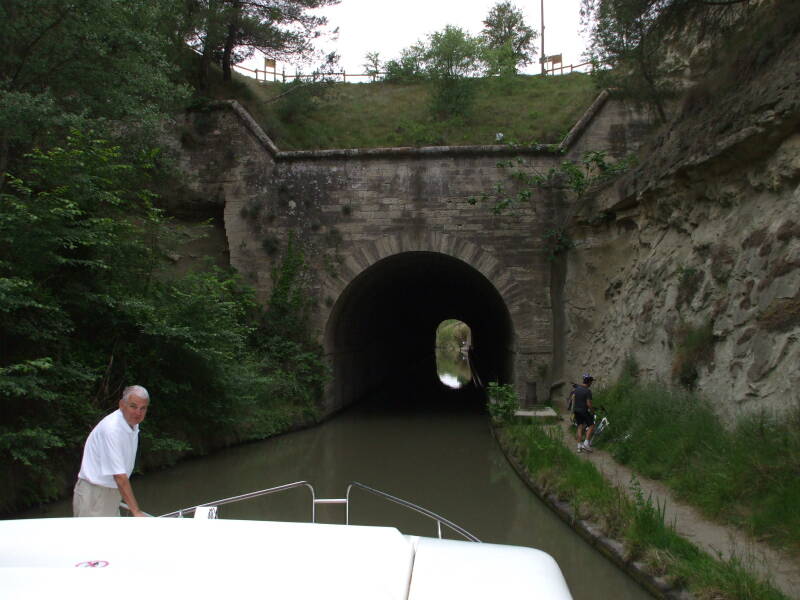
They finished expanding the tunnel and lining it with concrete by the spring of 1680. The resulting passage is 173 meters long and six meters wide, with an arched ceiling peaking at 8 meters above the water. This was the first navigable canal tunnel in Europe. Riquet died soon after it was finished, this tunnel was his last major project.
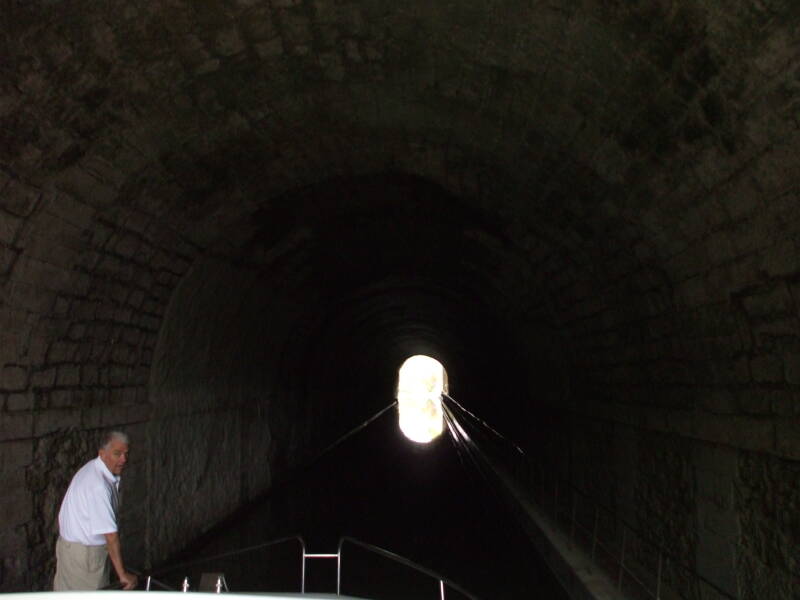
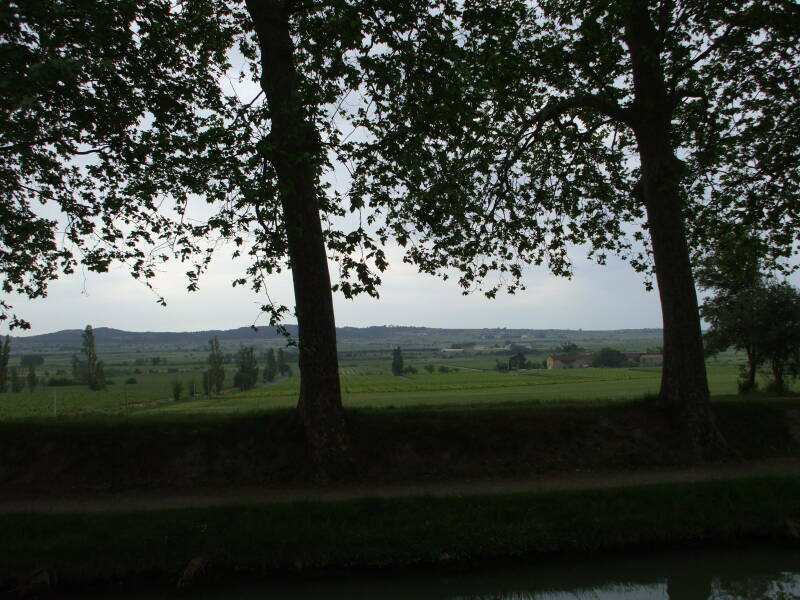
The canals provide great views of the fertile farmland.
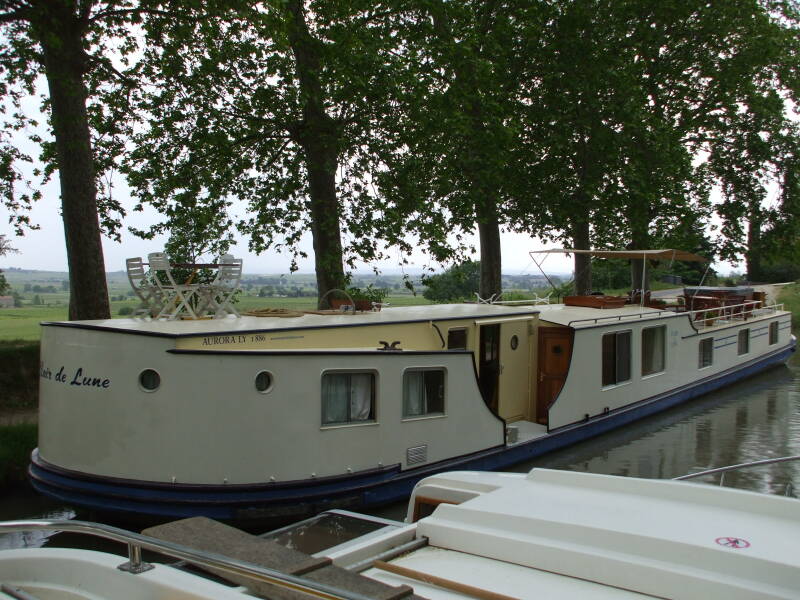
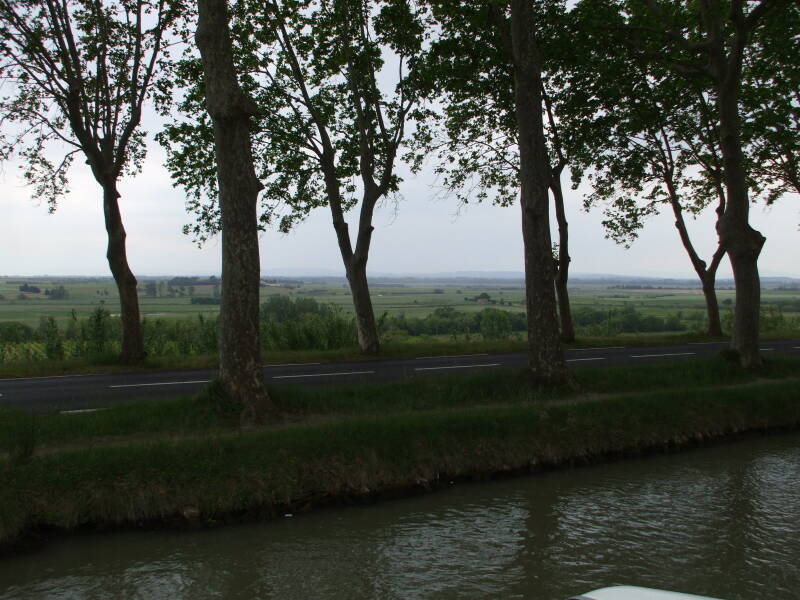
Poilhes
More onPoilhes
Light mist began as we neared Poilhes. We tied up where the road follows a bend in the canal at the edge of town.
The nearby prehistoric site of Régismont-le-Haut contains remains of an open-air settlement from the late stages of the Aurignacian culture, dated by 14C to between 29,200 and 27,900 years ago. These people were among the first anatomically modern humans who spread from Africa through the Near East into Paleolithic Europe. The local site includes 27 circular hearths and small lithic or cut stone objects, mainly in flint and quartzite. Some of the flint is from northern Aquitaine, other from Costières du Gard. They moved around, they traded. There were also a few blocks of dyes. They used color for esthetic and perhaps spiritual purposes.
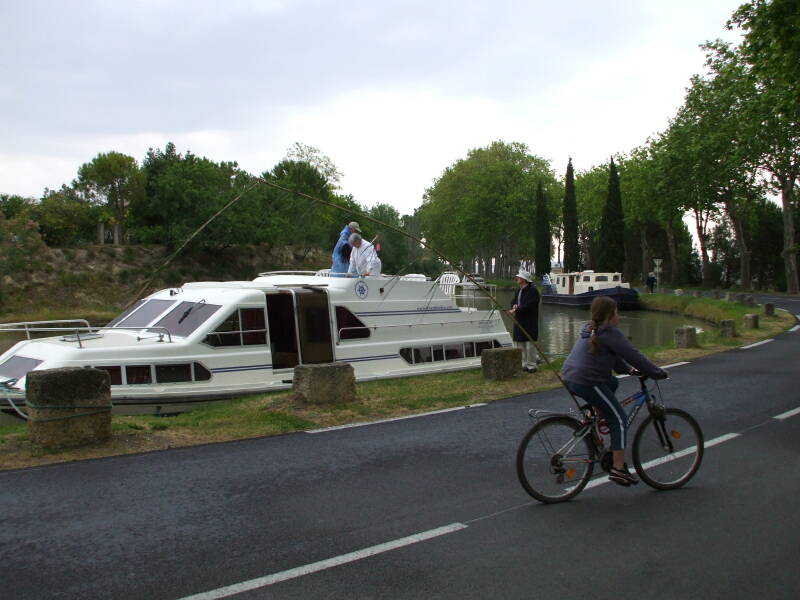
The Domitian Way, a Roman road linking Italy to Iberia, was established in 118 BCE. There were Roman settlements in this area.
After the Roman Empire faded, the region was subject to centuries of religious and political uphevals. The first written mention of Poilhes is in the Cartulaire d'Agde in 1187.
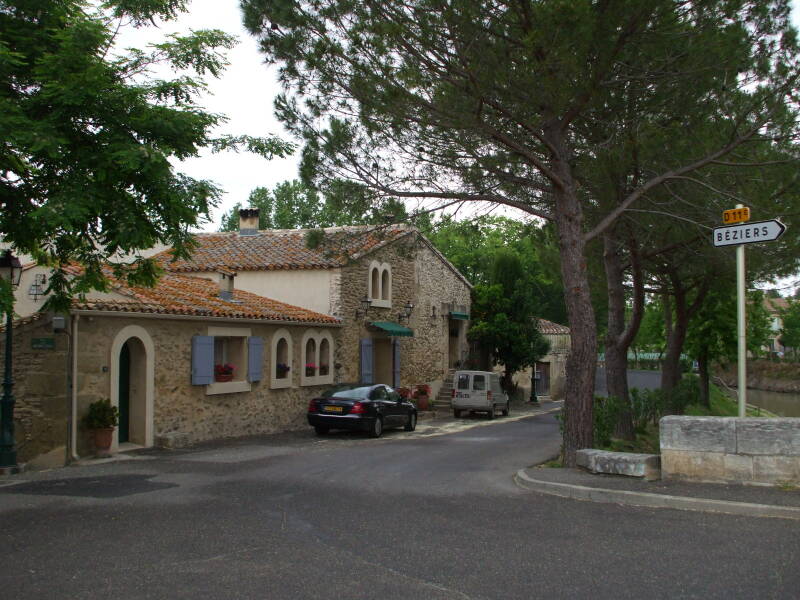
The Canal du Midi was built to transport wheat and wine. Once it began operation in 1681, Poilhes shifted more toward viticulture — grapes and wine. The town prospered, developing mostly along one bank of the canal.
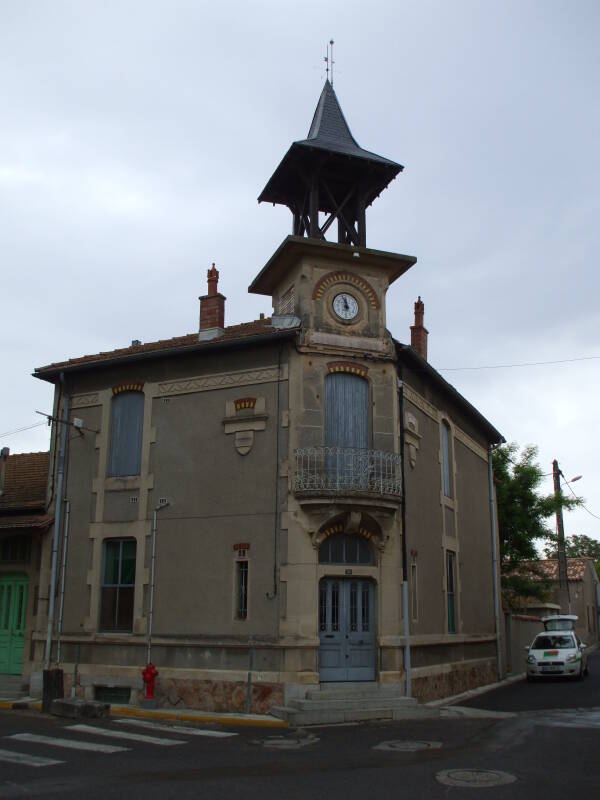
The Étang de Capestang is a wetland area of over 13 square kilometers. The river Aude floods it at times, and it maintains reed beds, open channels, and wet meadows and pastures. It was once connected to the Mediterranean, but silt buildup in the Aude plus human interventions have reduced the amount of water.
Several canals were dug in the Middle Ages to drain some of the marshes, which were sources of malaria and other diseases. Some marsh was retained, to raise leeches for medicine, and to grow reeds to build roofs. Now it's a nesting, feeding, and refuge place for many species of birds including herons, egrets, ducks, magpies, raptors, and others.
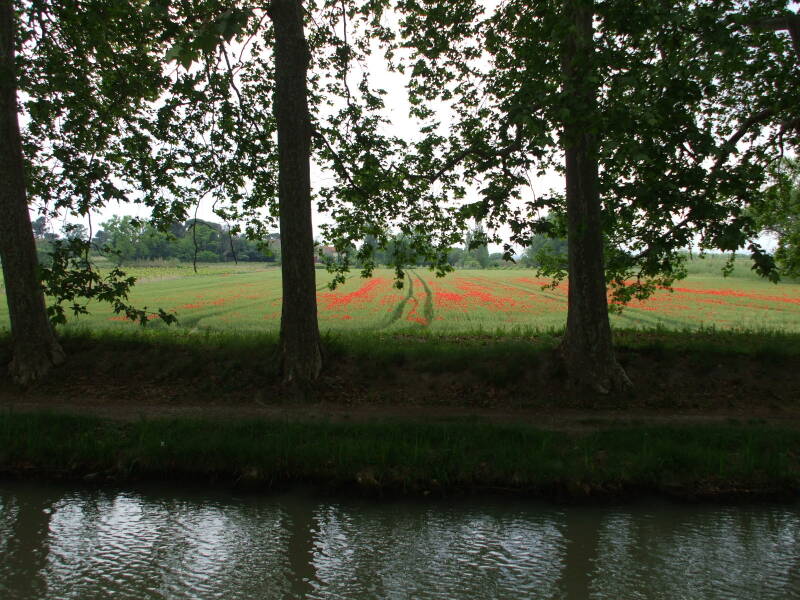
Capestang
More onCapestang
The Romans called it caput stagni or "head of the pond", as it was at the northern tip of the marshy area. That name had shifted slightly to Caput Stanio by 862, when it first appears in documents. Today it's Capestang.
The collegiate church of Saint-Etienne Capestang began construction in the 13th century. Only the choir and a 43 meter bell tower were built before the Black Plague and lack of money stopped the project. It was an ambitious project. A collegiate church is one where the daily office of worship is maintained by a non-monastic community of clergy called a college of canons, a self-governing body possibly presided over by a dean or provost. It's similar to a cathedral, but isn't the seat of a bishop.
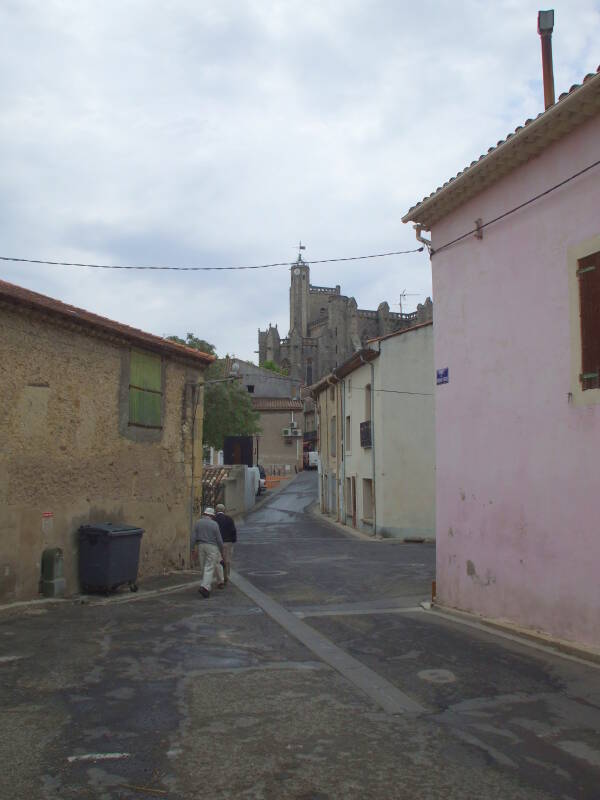
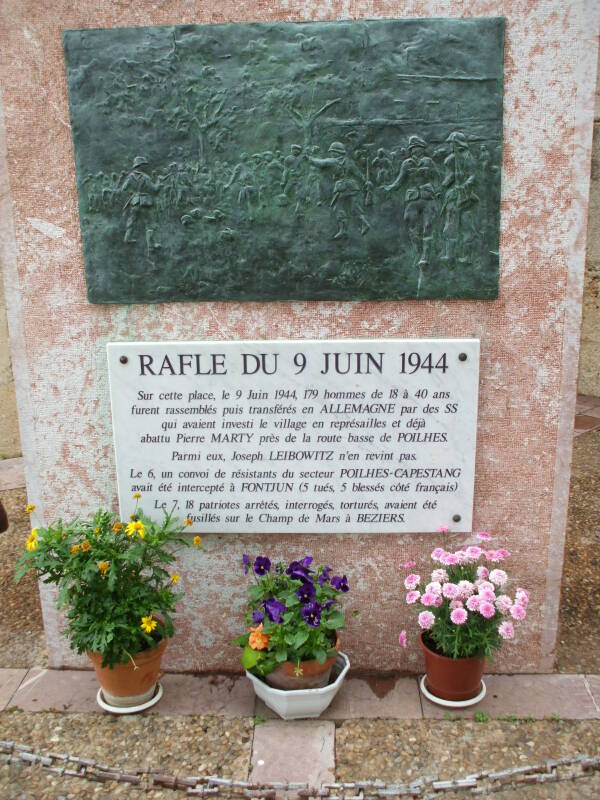
The marker above says:
Roundup of 9 June 1944
In this place on 9 June 1944, 179 men aged 18 to 40 were rounded up and then transferred to Germany by the SS who had invaded the village in retaliation and had already shot Pierre Marty near the low road of Poilhes.
Among them, Joseph Leibowitz did not return
On the 6th, a convoy of resistance fighters from the Poilhes sector had been intercepted in Fontjun (5 killed, 5 wounded on the French side).
On the 7th, 18 patriots were arrested, interrogated, and tortured, and then shot on the Champ de Mars in Beziers.
Our hotel in Béziers had been named for that "Field of War", the Hôtel Champ de Mars.
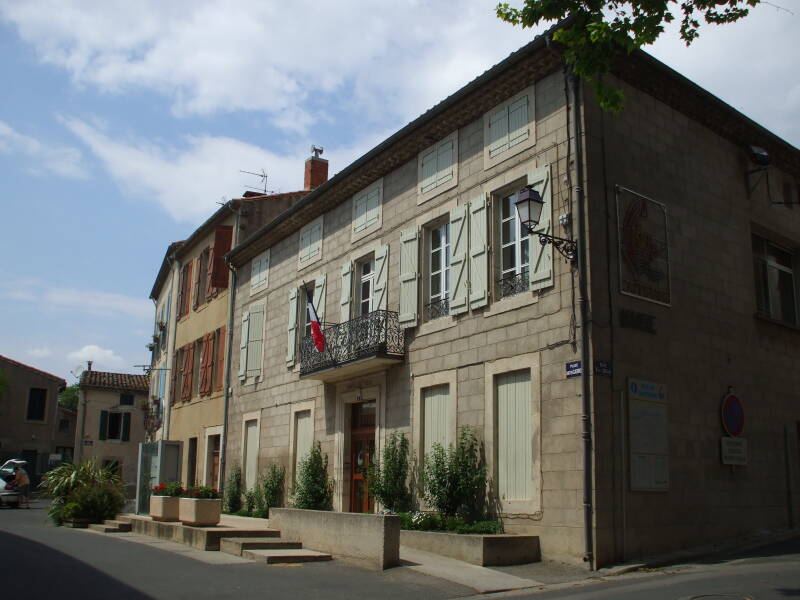
Capestang's economy is mainly based on agriculture, including olive trees and viticulture.
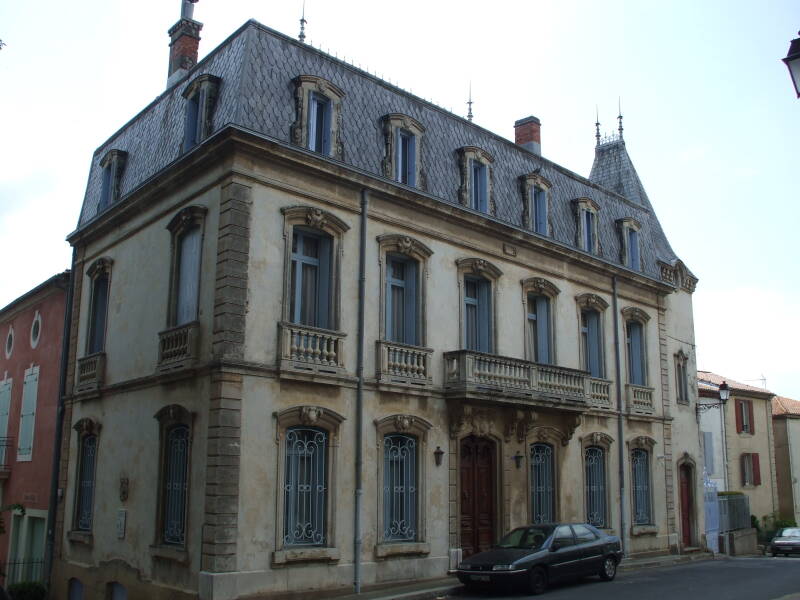
Local wines are classified as Pays des Coteaux d'Ensérune, South of France.
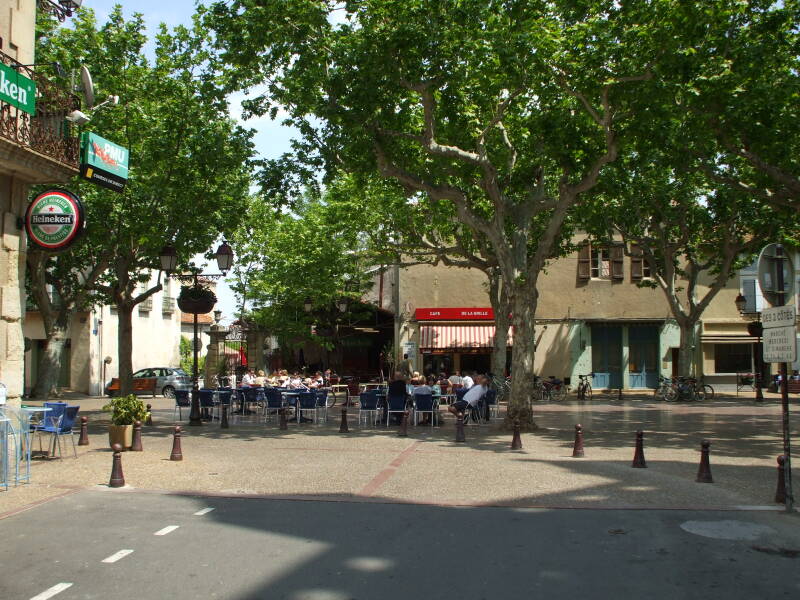
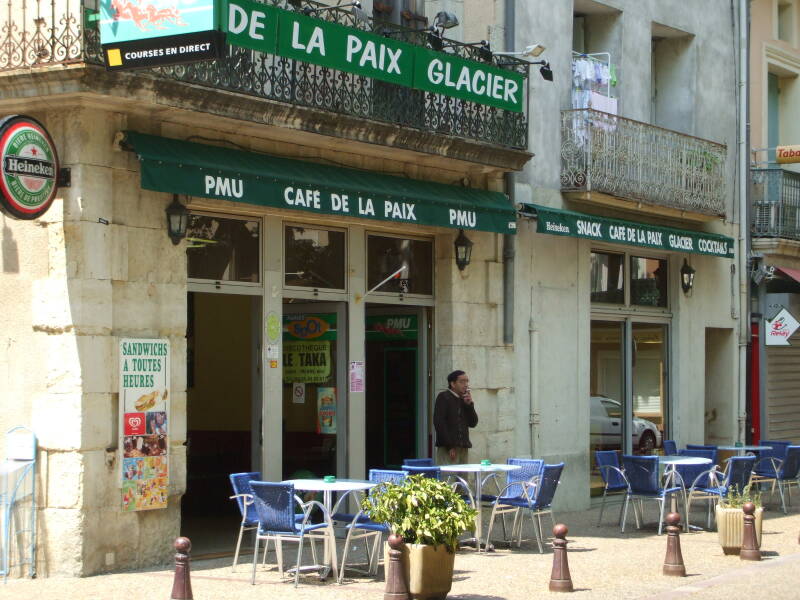
The sun came out as we explored the town.
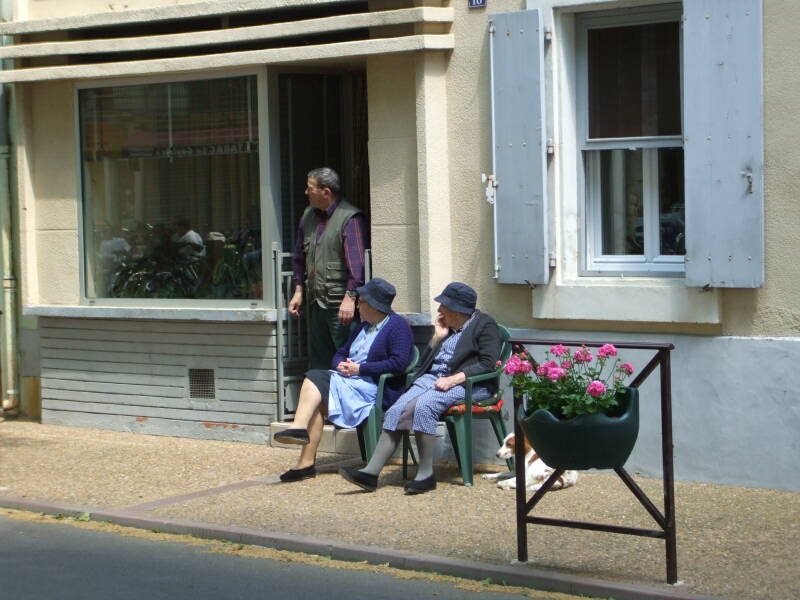
We got lunch in a local restaurant, then returned to our boat.
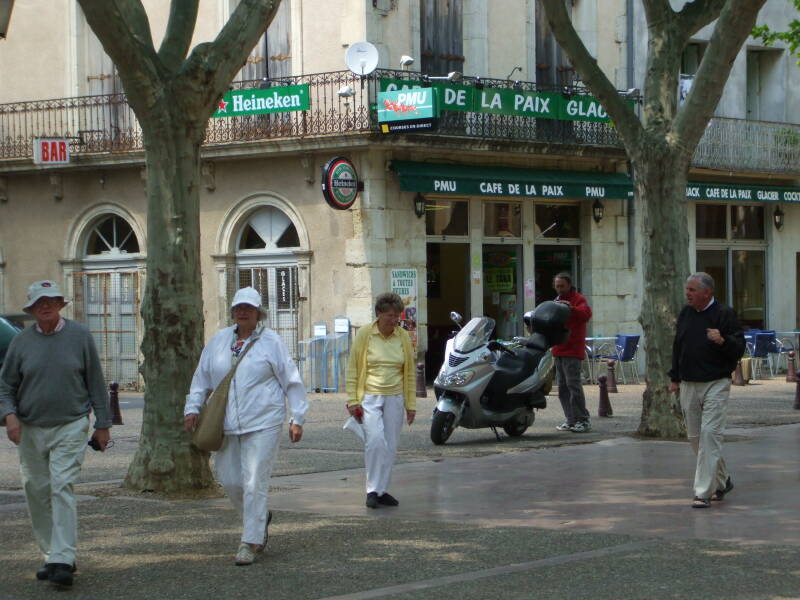
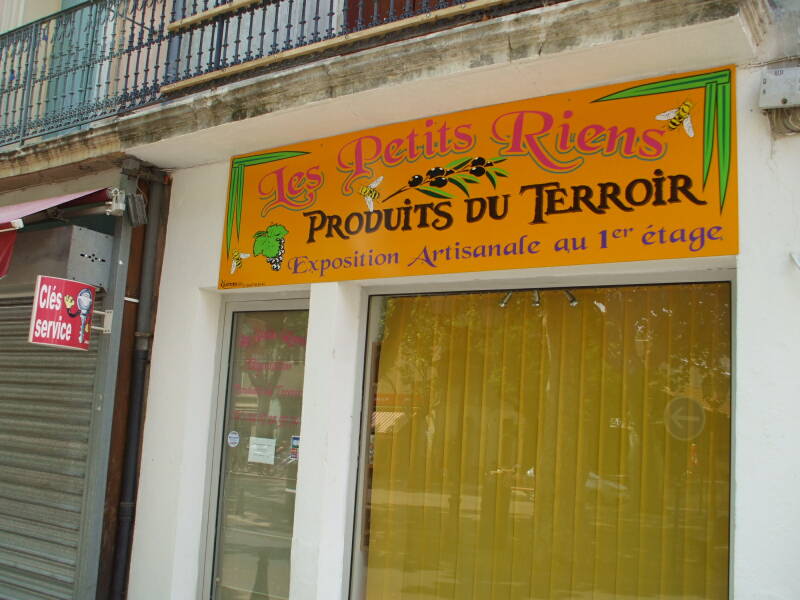
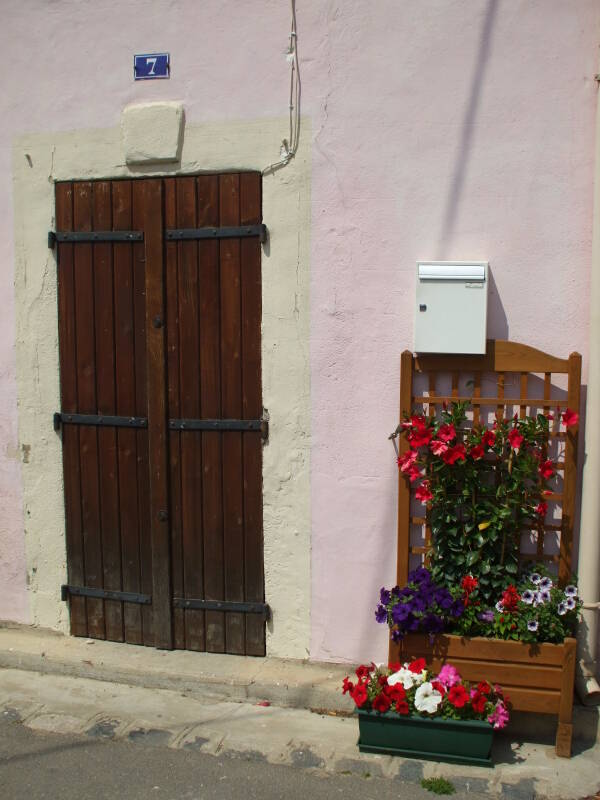
Back onto the Canal
A passenger barge that we had passed earlier was now directly in front of us. We had been exploring a local town, they were staying on board.
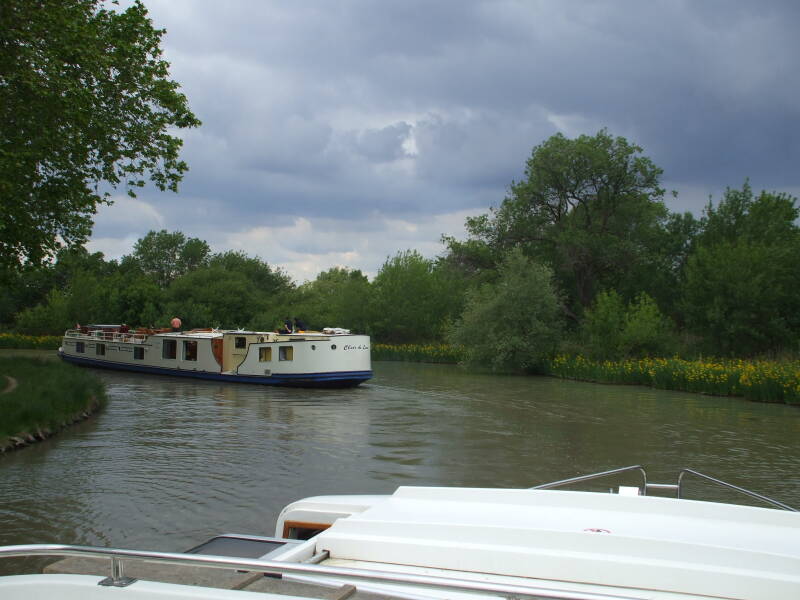
Other passenger barges were tied up along the bank as we approached Le Somail.
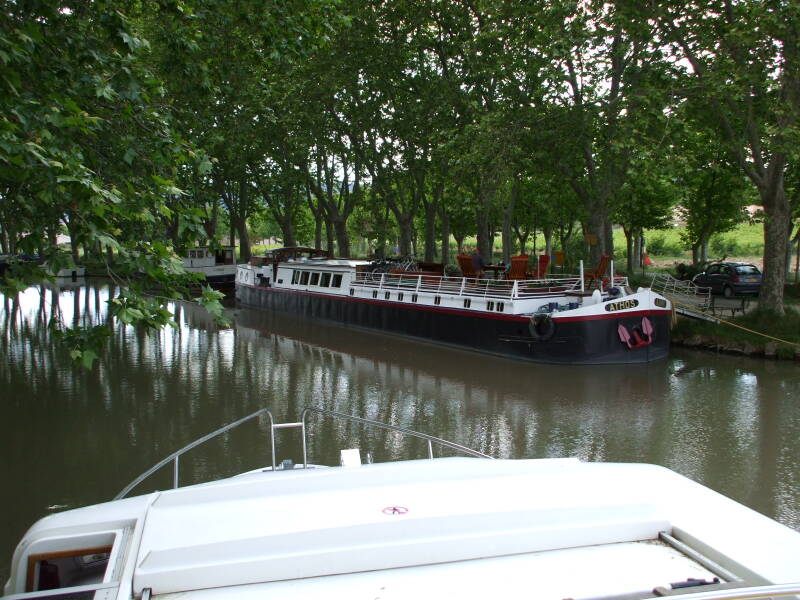
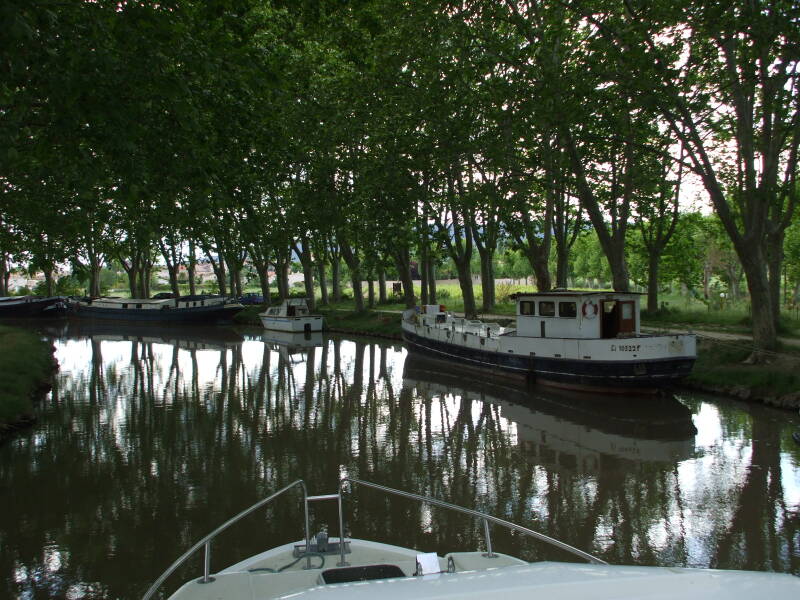
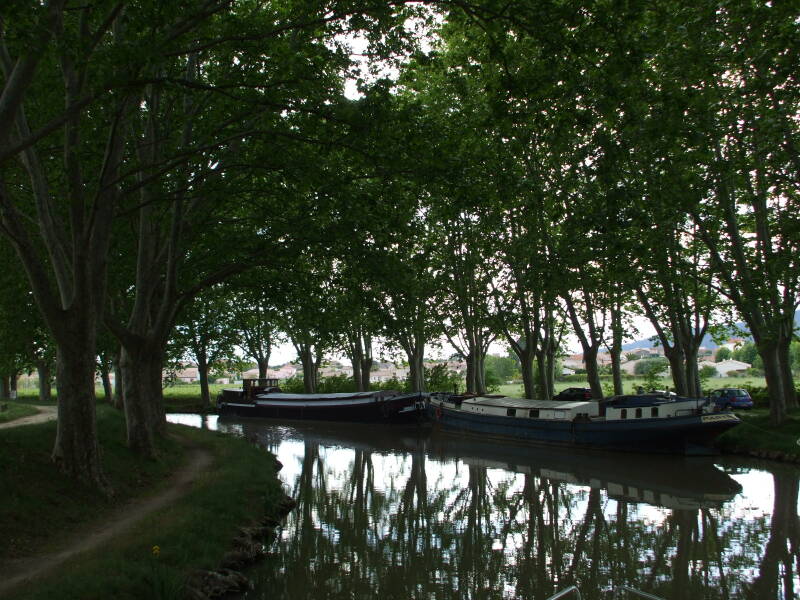
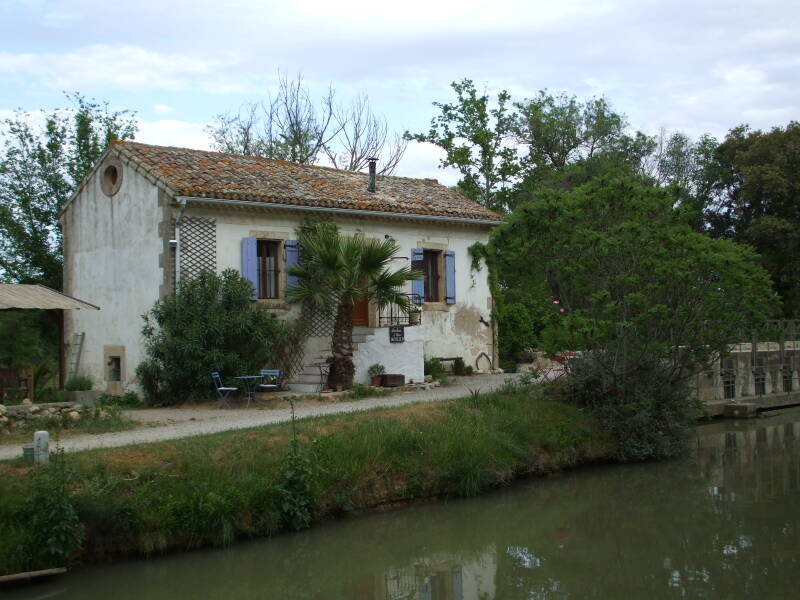
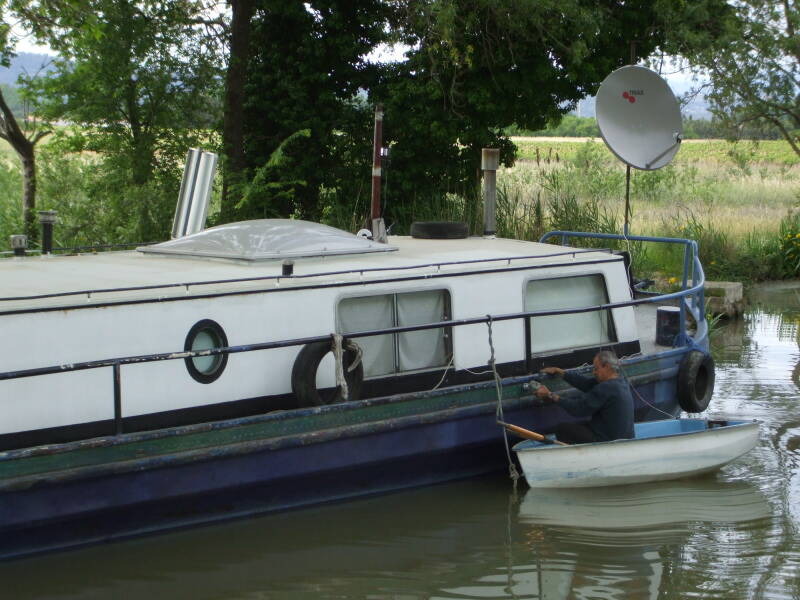
Le Somail
More onLe Somail
The port of Le Somail was built at the end of 1682, as the canal was completed. It was built as a sleeping stage, a place where passenger barges would stop for the night. The inn was built in 1684, giving passengers a place to spend the night.
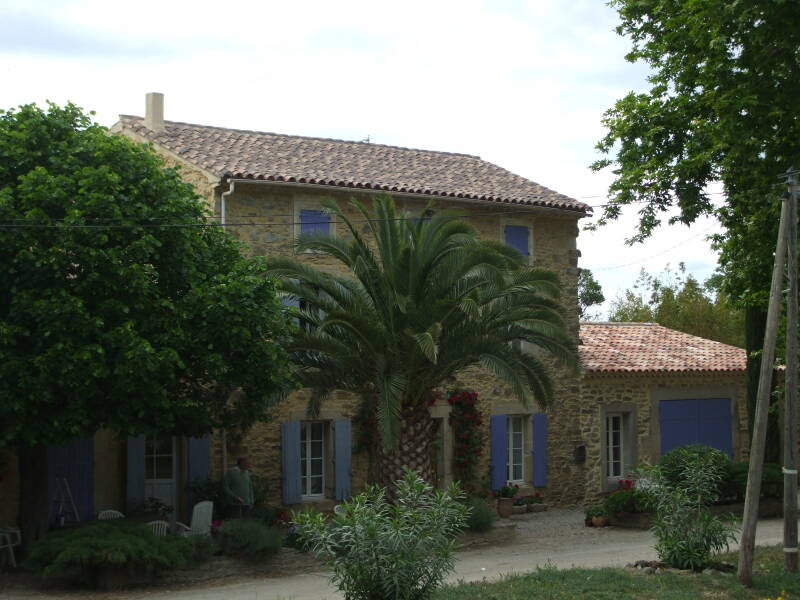
Somail, sommeil.
The name was pretty obvious despite the drift in spelling.
Amazon
ASIN: 2070406474
Amazon
ASIN: 0804168881
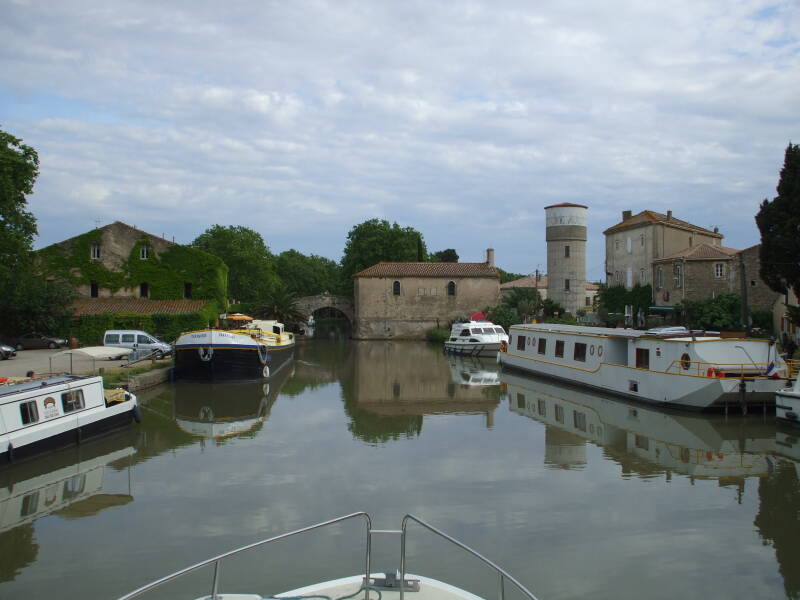
The "donkey back" arched stone bridge was finished by 1683.
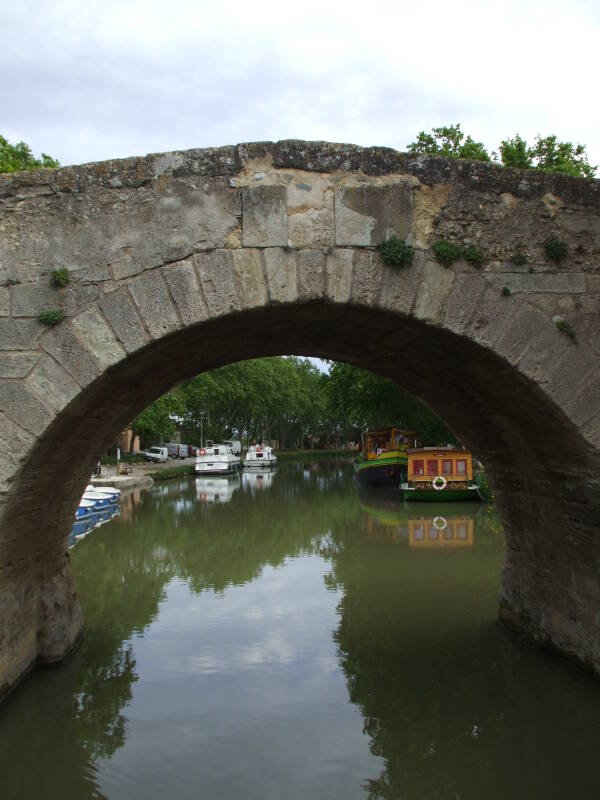
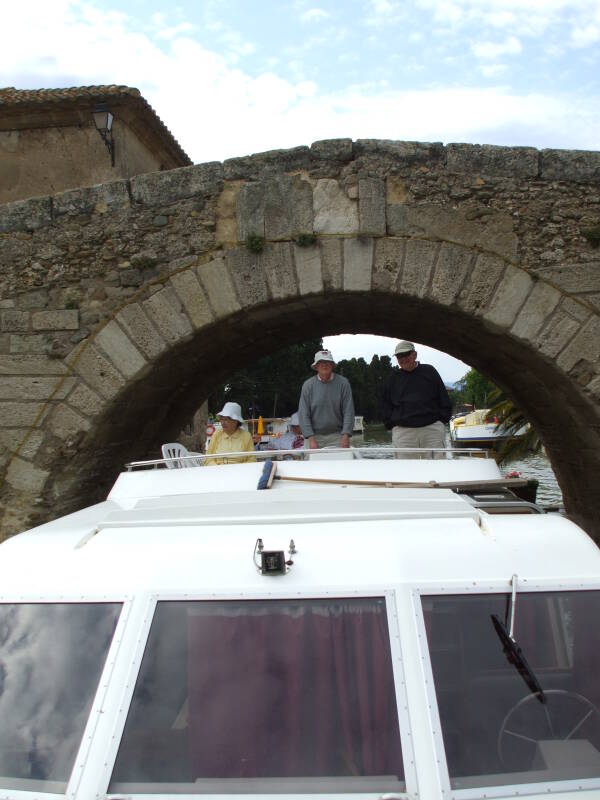
A chapel was built here between 1672 and 1693. Warehouses and other buildings were added as the port community grew.
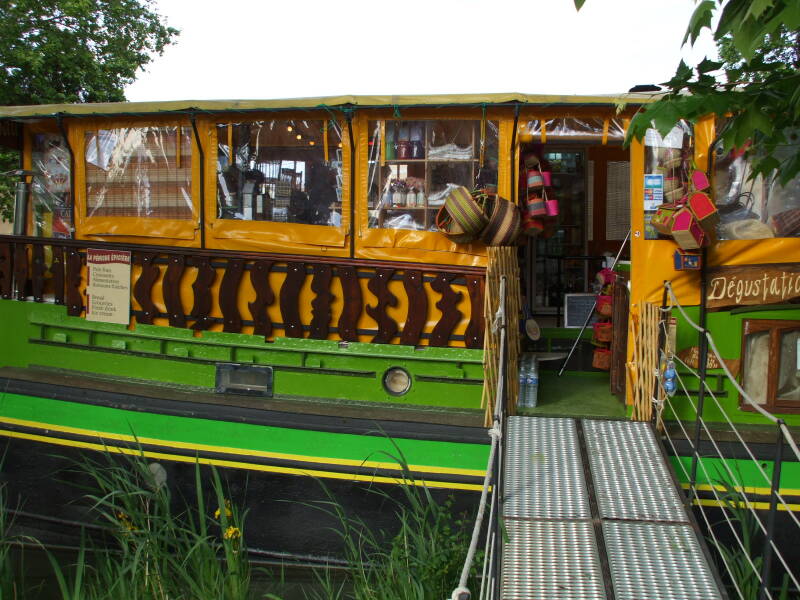
Now there's a shop in a brightly colored barge.
